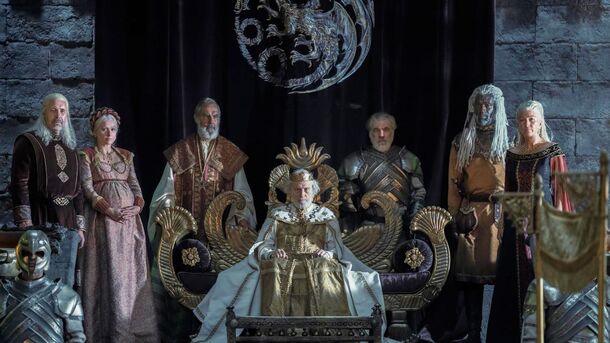House of the Dragon: The Queen Who Never Was, Explained

The Prince That Was Promised, the Queen Who Never Was… What’s up with those nicknames?
George Martin ’s books are filled with countless obscure and unobvious nicknames — which, of course, were reflected in the TV adaptations. But while in the books, you can always come back to the previous pages and figure out the meaning of something, you don’t really do that when watching a series. It’s simply bothersome.
Yet, sometimes, you let your attention slip for one second and then keep missing the point for the rest of the TV show or until someone explicitly explains it to you. In Game of Thrones, it was The Prince That Was Promised that confused many people; in House of the Dragon, it’s the Queen Who Never Was. They sound similar, right?
Wrong: these are two completely different people, eras, and context. Let’s see what the deal with the Queen Who Never Was was is about and where it came from.
The Queen Who Never Was: Nickname, Explained
The person this unique and somewhat embarrassing nickname addresses is Rhaenys Targaryen. Often referred to as the Queen Who Never Was, she was reminded about her unfortunate downfall her entire life with it — though realistically, she had nothing to do with her past “failure” other than being born a woman.

When King Jaehaerys Targaryen died, he didn’t have a clear heir: all his children were dead, so the Great Council was called to determine the next monarch of the Seven Kingdoms. Many Targaryens tried to claim the Iron Throne, but the final choice boiled down to only two candidates — Viserys and Rhaenys Targaryens.
They both had really strong claims to the Throne, being Jaehaerys’ grandchildren, but in the end, the lords and ladies of Westeros settled on Viserys solely because he was a man. In their eyes, a woman couldn’t rule the Seven Kingdoms without causing a great division, so Viserys was a “safer” option to go with.
After that, Rhaenys Targaryen was forever robbed of any rights for the Iron Throne, losing in an unfair competition — and became known as the Queen Who Never Was. This bitter nickname always reminded her about how her gender changed her fate, and that was the reason she was so sympathetic toward Rhaenyra, who suffered from a similar injustice after King Viserys’ death.